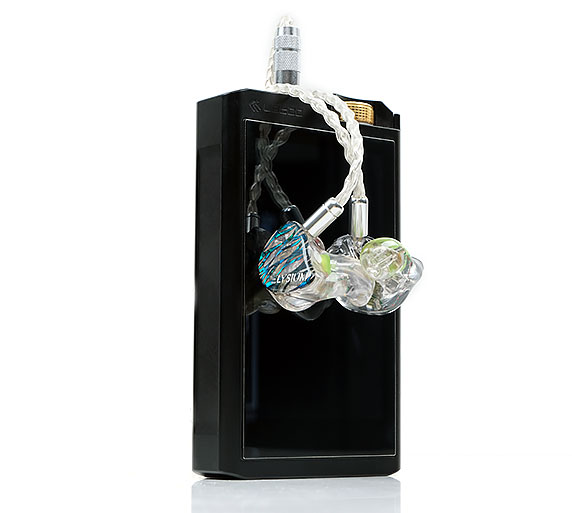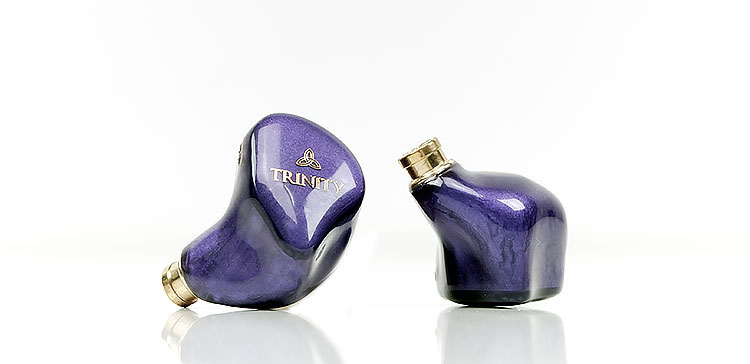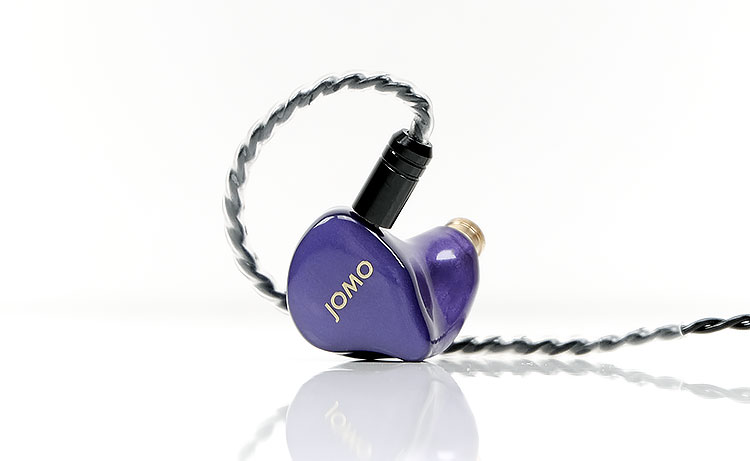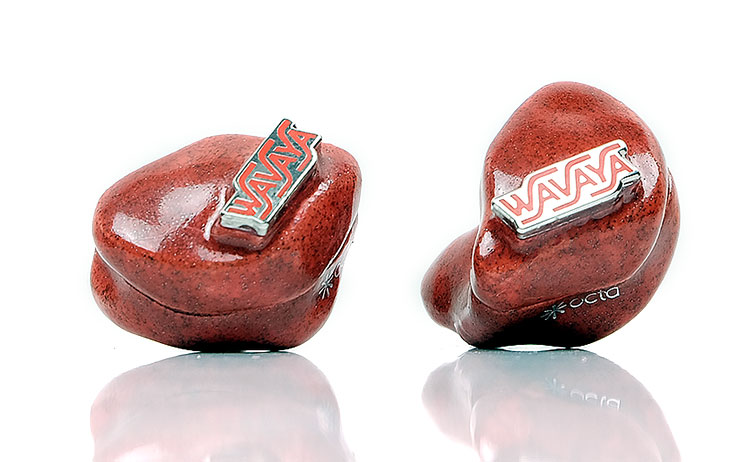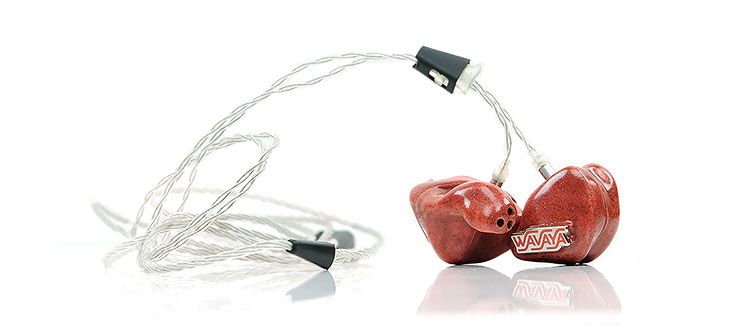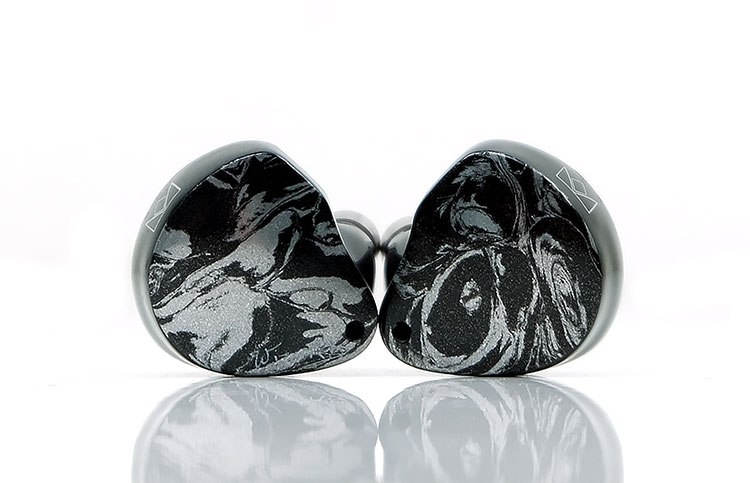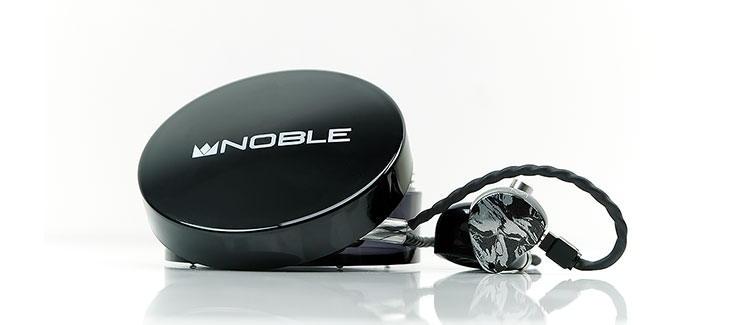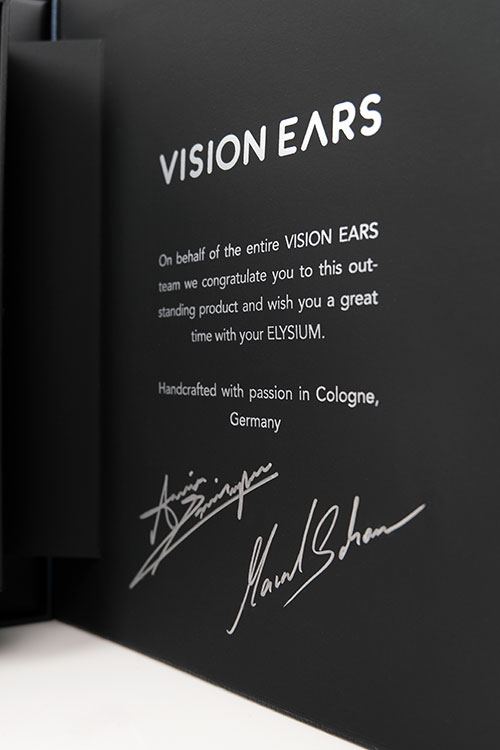Synergy
Efficiency
The Elysium is rated at 16.4Ω and 105dB SPL which I would classify as a medium efficiency specification. Many of these new hybrid monitors have a similar low SPL rating due to the current demand and relative inefficiency of the Sonion and piezoelectric drivers.
The Elysium is no different in that regard although we did find the larger gaps on paper not so big in real life with the likes of the 96dB SPL-rated Jomo Audio Trinity almost identical for current demand and volume matching despite the discrepancy on paper.
We also found the Wavaya Octa the easier of the two for volume and driving despite its lower rating of 100dB SPL compared to the 105dB SPL of the Elysium.
What you will find, however, is a slightly higher level of resistance to quick volume changes from minimal steps. A pure BA or higher SPL-rated monitor will be more sensitive to smaller volume changes such as Vision Ear’s own VE6. Whereas we found the Elysium can take 10-12 steps unbalanced low-gain on the HiBy R5 and Cayin N6ii before it starts to sound too loud.
Bear in mind the Elysium stock cable is 2.5mm TRRS so if you do not plan on using a TRS adapter you will find going balanced on the likes of the Cayin N6ii and the FiiO M11 a breeze. No issues with power here as well as it is hiss proof.
Pairings
Most DAPs these days come equipped with excellent PMEQ systems or in the case of HiBy, their excellent MSEB. These tend to render precise tonal matching a bit more moot than it used to be.
The 105dB SPL also means the Elysium is not prone to noise and hiss so we did find that pretty much all our tested sources delivered a very nice black background with the Elysium.
I would go for the DAP with the best dynamic range and level of resolution here rather than any specific overtone as well as something that can offer decent mW in either balanced or unbalanced mode to get the best out of the Elysium.
You want to push the Sonion top-end drivers and the 6mm dynamic driver to their maximum potential.
Examples
For example, I enjoyed the smooth timbre with the Cayin N6ii/A01 but I felt it a little restrained in its dynamic range compared to the excellent Hifiman R2R2000 and I included the Red cheaper version in that statement also.
I was using Five Finger Death Punch’s excellent and hard-hitting Fake track from their recent “…And Justice for None” album.
The R2R2000 Red is a warmish-sounding DAP with little in the way of EQ tweaking capability but the Elysium pairing was potent with far better dynamic range. The bass layering on the single BA of the Elysium sounded deeper, punchier, and with far better detail.
In comparison, the N6ii sounded a little flatter, (without MSEB), with the Elysium delivering an uninspiring bass response from that single BA.
I could go either way with the Sony 1Z flagship or the Lotoo PAW Gold Touch depending on my mood. The Sony 1Z is a little more analog in its flavor up to the treble and makes better use of the Elysium BA for a warmer fuller low-end than the Lotoo.
The PAW Gold Touch is much more adept at maximizing the dynamic and electrostatic drivers on the Elysium. You get a far better sense of headroom and air with this pairing and much better instrumental separation on the Elysium compared to the Sony.
You do not have to spend four grand though to get some excellent separation on the Elysium. The new iBasso DX160 which retails for $399 and one we have cooking for a review soon is an excellent match with the Elysium.
It takes a slight edge off the richness in the dynamic driver but still retains some seriously excellent layering throughout and a beautifully clean but refined treble.
Select Comparisons
We purposely selected alternative hybrid electrostatic/piezoelectric monitors rather than simply price match other non-electrostatic designs. All comparisons were done with the Lotoo PAW Gold Touch reference DAP, stock cables, and no EQ or DSP applied.
Jomo Audio Trinity
SG$3,799.00
Technical
The Trinity is a universal form factor hybrid electrostatic monitor and it is the current flagship in Jomo’s IEM range. It is slightly cheaper using the current EUR to SG$ exchange rate.
The Trinity uses 7 drivers in total. That includes a single 8mm dynamic driver for the lows, 4 balanced armature drivers for the mids and highs, and 2 electrostatic super tweeters. All are connected with High-purity SPC internal Litz wiring.
This is compared to Elysium’s more unusual single BA for the lows and a single dynamic driver for the mids. Like the Trinity, it also uses 2 electrostatic super tweeters for the highs. Logically the count and split are 3-way for the Elysium and 4-way using Jomo Audio’s proprietary Cross-Sync Uniphase crossover network.
Build
Because the Trinity is universal it does use tips and the isolation is not quite as complete as Elysium’s custom design. The fitting is top-notch though and near to a custom fit with that aggressive custom-universal curving. Both are acrylic monitors and are fairly light in the ear.
One final build note is that the Trinity has three different possible signatures due to the use of stainless steel, brass, or black brass. We have the brass version which is slightly warmer than the SS version. I cannot comment on the black brass sadly as no available sample here.
Performance
The Trinity is rated at 30Ω and a fairly inefficient 96dB SPL compared to the Elysium at 16.4Ω and 105dB SPL. The Trinity here will be a little harder to drive and will also require more current to volume match the Elysium though the gap is not huge.
A good example was a 1-2 step gap between them both on the HiBy R5 unbalanced low gain which is fairly insubstantial for volume matching.
Neither are inordinately hard to drive so regular DAPs will be fine, but smartphones might pose an issue for the Trinity for volume. The better the amplification signal the better these two will perform particularly the Trinity.
I suggest going balanced where output power is better on your DAP of choice to allow both enough headroom. Neither monitor will show up with faint hiss from high noise floors on certain DAPs such as the R6 Pro or the Cayin N6ii A01 module, even in balanced output.
Tuning
Although technically I find both of them to give a generally smooth to slightly euphonic performance the contrast in the dynamic driver and BA positioning is very interesting.
The Elysium timbre on the low end is more BA-like with excellent speed, a tight response, and a shorter level of decay than the Jomo Audio’s dynamic driver. The dynamic driver on the Jomo is more elevated, with more body and sub-bass presence but also a touch slower and slightly more disconnected sounding with a deeper lower-mids cut to prevent bass bleed.
Once you move up into the mids the timbre flips upside down with the thicker, richer, and smoother tone of the Elysium compared to the lighter contrast of the Trinity BA mids presentation. The Trinity mids are slightly leaner, still relatively sweet-sounding but very detailed and fast.
The Elysium mids are a little more languid in their pace and decay but sound far more engaging and natural. Despite the detail and speed, the Trinity mids do not quite have the power and presence of the Elysium midrange. Vocals, in particular, have much more body and sound more powerful on the Elysium.
Both are incredibly articulate, fast and airy treble performances. However, both share a more relaxed and natural tuning compared to the harder more aggressive Khan treble tuning.
One subtle difference I noted was the tuning on the Elysium seems a little more refined for upper harmonics control in percussion and vocal sibilance.
With the Trinity, it felt like the 4k amplitude and 8k bump might be creating a slight harmonic discord making it vocals more prone to sibilance. The Elysium didn’t suffer from that and I do think that is down to the use of the dynamic driver for the mids and not a multi-BA design.
Wavaya Octa
€1,590
Technical
The Octa is an entirely custom monitor and almost half the price of the Elysium. Its configuration is 4 electrostatic drivers accompanied by 3 BA drivers, (one is a dual woofer so 8 in total), but unlike the Elysium, they have opted not to use a dynamic driver at all.
The configuration is also a little different for crossover. The double driver for the low-end is a full range plus woofer with its crossover covering the sub-to-midbass range.
You then have a super double tweeter for the mid to upper mid frequencies and another full-range cover for the upper bass to lower-mids. The electrostatic drivers are for the highs and super highs.
Due to the particular structure of the electrostatic drivers, WAVAYA started the tuning from there and added the other bands one by one configuring each driver or set of drivers separately. So, each driver or double driver has his own crossover/band passing and WAVAYA contends that a single crossover would not suffice.
Build
The Octa has a twist in that it is made from porcelain rather than acrylic. Wavaya contends that this is for medical reasons with porcelain being used as a much more effective barrier to contact-related infections inside the ear due to less buildup of sweat compared to acrylic.
However, it does make it bigger, and heavier and the seal is quite obvious. The Elysium is smaller, lighter, and aesthetically more pleasing. There are benefits to both I suspect and both seal very well indeed. Just that size and weight will differentiate.
The other key difference is in the use of connectors. You can use IPX with the Octa as well as 2-pin whereas the Elysium is just 2-pin. I have to admit, I love IPX connectors and see the benefits over MMCX and 2-pin but it is not yet widely used by aftermarket cable companies.
Performance
The Wavaya Octa is rated at 19.5Ω and 100dB SPL compared to the Elysium’s 16.4Ω and 105dB SPL. Those electrostatic drivers are not the easiest to drive and having 4, as opposed to 2, seems to pull the Octa SPL down even further than the Elysium on paper.
However, in real-life testing, we did not find that to be the case with the Elysium sounding the more demanding of the two for a higher listening volume level. Certainly, on our R5 test DAP was unbalanced the Octa seemed the louder of the two
As such, current requirements are a shade lower on the Octa meaning you need 1-2 fewer volume steps on any source to get a comfortable listening level. Both do not have any particular heavy voltage concerns with low impedance ratings so moderate sources should cope fine with driving both.
Tuning
The key difference between these two monitors is the mids. Both use BA for the low-end so it is not quite as powerful or as deep sounding as either the Khan or the Trinity. However, whereas the Octa continues to use BA for the mids, the Elysium switches over to that HALC 6mm dynamic driver and it makes a big difference in the presentation.
For a start, the Octa staging is much closer and more intimate with vocals very much to the fore, more so than the Elysium. However, the timbre is lighter, and cleaner with less richness and body so it is lively, and forward but lacking the same weight and texture.
The Octa does have more speed, a shorter decay, and perhaps a touch more micro-detail with imaging cues. The Elysium instead goes for a natural wetter almost euphonic delivery and has better detail and texture but perhaps less dynamic with its imaging cues.
You still get a touch more sibilance and odd harmonic overtones on instrumental and vocal timbre on the Octa and again I am assuming BA transitions to electrostatic create more of that than the ‘dynamic to electrostatic’ design of the Elysium.
Treble is a little leaner, brighter, and more forward sounding on the Octa. The Elysium dynamic driver/electrostatic transitions seem more impervious to treble-infused brightness so you get the detail and on the very high-pitched notes, you do get plenty of that electrostatic sound.
However, you do not get the same level of potential sibilance further down into the upper mids and mids so it sounds the smoother and more full-bodied of the two.
Noble Audio Khan
$2399
Technical
The Khan is also a hybrid or ‘tri-brid’ monitor and at the time of writing, you can order it in custom or universal format. This particular one we reviewed is in a universal format and is slightly cheaper than the Elysium. The custom version of the Khan is virtually the same price as the Elysium.
The Khan is more traditional in its configuration with a dynamic driver for the lows, and 4 BA for the mids but instead of Sonion electrostatic drivers, it uses a piezoelectric driver for the highs. the Elysium, by contrast, uses dual electrostatic for the highs, the HALC 6mm dynamic driver for the mids, and the large BA for the lows.
Build
One is universal and the other is custom so quite different designs. Both are acrylic builds, the Khan being the smaller of the two with a fairly long universal nozzle.
The universal Khan fits very well though but it does have some venting whereas VE did not need to vent the Elysium due to the smaller size of the dynamic driver being used.
Thus, the Elysium will seal better and most likely fit ‘to a tee’ if the ear impressions are done correctly. The Khan will require tips and I tend to use the foams for my preferred sonic tweaks and offering the best seal.
Performance
The Khan’s official rating is not disclosed by Noble Audio. That is in keeping with their policy for all their IEMs. In our review in March, we deduced that the Khan was close to 105-110dB SPL.
We are assuming that Noble is still tuning around 20-30Ω which has been much the case since we started reviewing their monitors a few years ago.
In our real-life testing that does seem to be the case with the Khan the slightly easier of the two to drive and also getting louder faster on our test HiBy R5 and the Lotoo PAW Gold Touch DAPs. Neither suffers from any background hiss issues on any of the other DAPs we used such as the R6 Pro and the FiiO M11.
Tuning
Of the three electrostatic hybrid monitors, we have compared with the Elysium, The Khan is the one that differs the most.
Noble has let the piezoelectric driver rip rather than tone it down. That means the overall tone is much cleaner, drier, and less forgiving than the rich and warm presentation of the Elysium.
The top-end of the Noble is much more forward in the presentation but it is not a sizzler for me, at least not with the foam tips and the stock cable. Rather it is strong, precise, and incredibly articulate but odd-harmonic dominant.
The Elysium is a little more relaxed by comparison and for me, Vision Ears has been a touch more cautious about letting those due electrostatic drivers off the leash.
The detail is just as good, and the articulation is also on par, just not as forward sounding, and not as hard in the overtones, especially on percussion and higher-pitched vocals. This is a smoother delivery with a better harmonic balance.
As you would expect the low-end on both differs with that dynamic driver on the Khan delivering a bit more sub-bass reach and quantity whereas the Elysium is a bit more neutral, tighter, and punchier. Neither monitor is quite as warm or mid-bass dominant as the Trinity.
Our Verdict
Granted I have personal preferences and I love a good mids tuning but still, the Elysium is a masterpiece and one of the best electrostatic custom monitors I have heard to date.
Will it stand the test of time? That’s a good question because technology is evolving so quickly this year that you never know what is going to come up shortly after.
However, no one is thinking BA for the lows and a dynamic driver for the mids, and that is the genius of the Elysium. It shouldn’t really work on conventional thinking but it does. The solidity and texture of the Elysium mids are to die for and just stunning because they can breathe and take center stage.
Vocals are smooth, slightly to the euphonic side but thoroughly addictive to listen to. The clever transition from mids to a smooth but very detailed electrostatic treble tuning is really the icing on the cake.
The Elysium is in my bag for 90% of the time and it pretty much works for almost all of the music I listen to for hours on end. Bass heads might find this not to their taste.
I suggest the Layla if you want the complete sub-bass experience from a flagship driver. But if solid mids and deep richly textured vocals are your things then the Elysium is it, and then some.
Vision Ears Elysium Specifications
- Crossover: 3-way system
- Frequency response = 20 -40 KHz, Up to 80 KHz in a free field test condition
- Sensitivity @1KHz/1 mW = 105 dB SPL
- Impedance @1KHz = 16.4Ω


